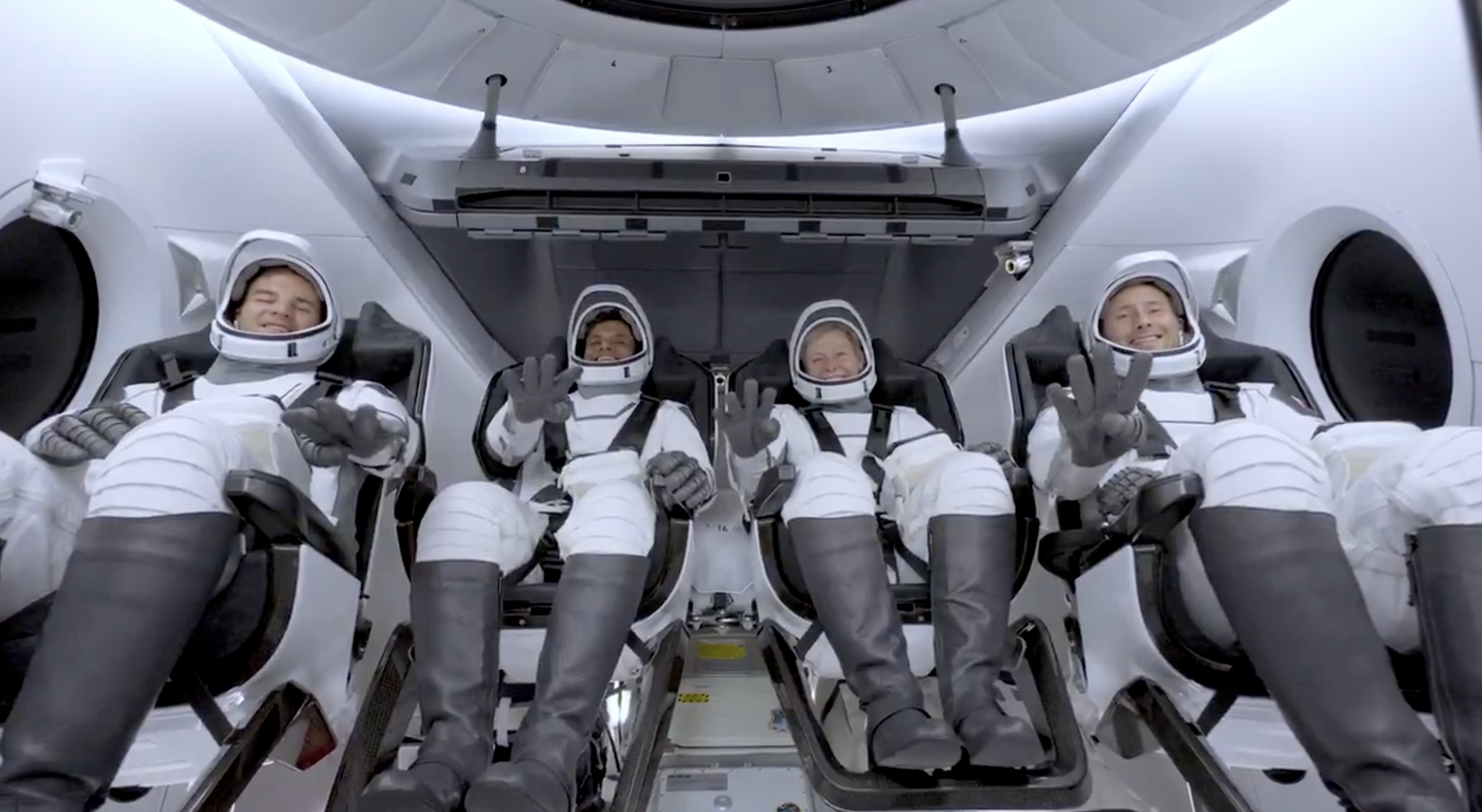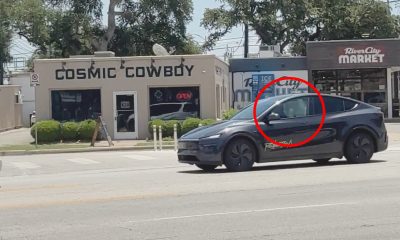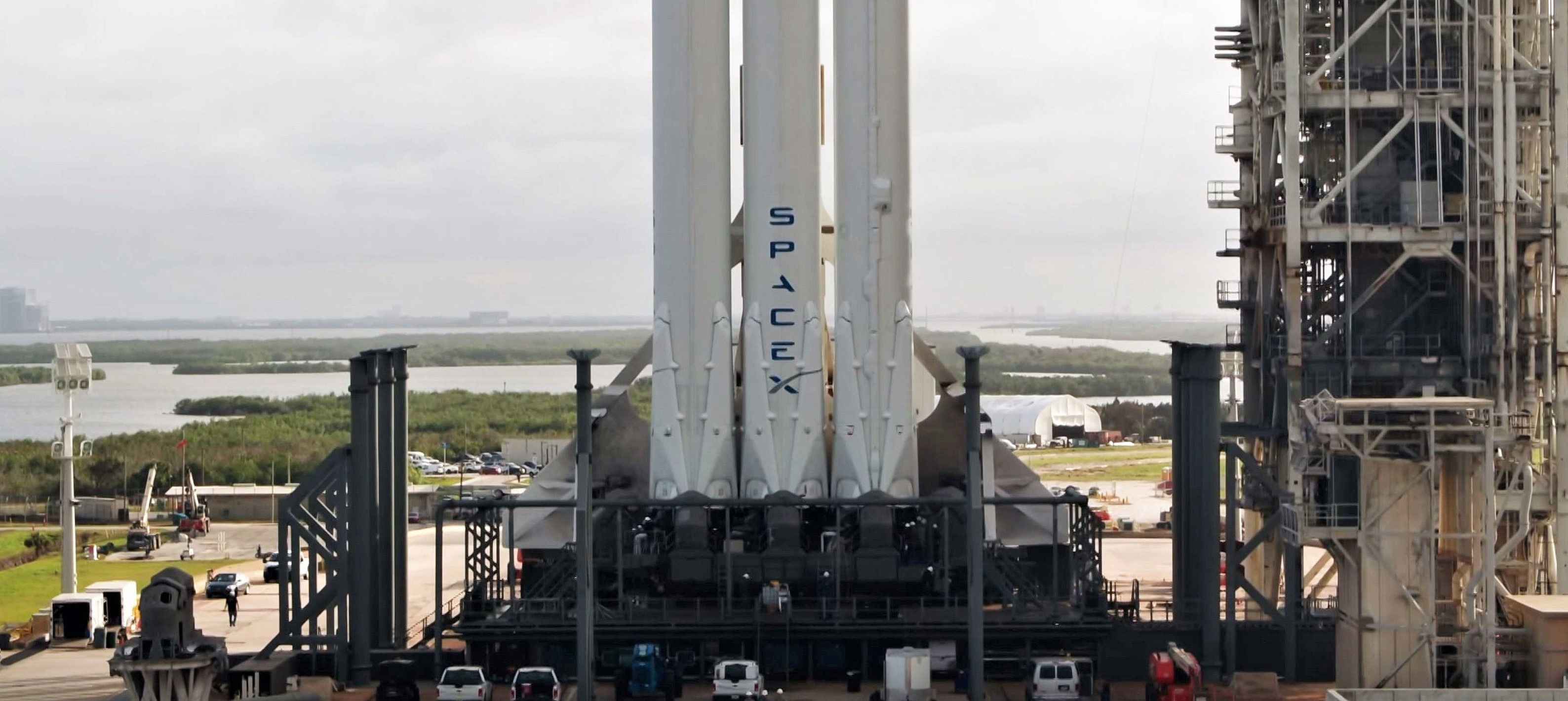The first commercial launch of SpaceX’s Falcon Heavy rocket – this time in a Block 5 configuration – is as few as ten days away from a targeted window beginning at 6:36 pm EST (22:36 UTC), April 7th. That target hinges on whether Falcon Heavy is ready and able to roll out to Pad 39A and successfully conduct its first integrated static fire, currently scheduled on April 1st.
The payload for this mission – communications satellite Arabsat 6A – had its original Lockheed Martin manufacturing and SpaceX launch contracts signed back in the first half of 2015, while the 6000 kg (13,200 lb) spacecraft was effectively completed once it was shipped from California to Florida at the start of 2019. After approximately 12 months of delays from an original launch target shortly after Falcon Heavy’s 2018 debut, Arabsat 6A’s four-year journey will hopefully reach completion in a geostationary transfer orbit. At the same time, the US Air Force says that it will be watching this launch – and the one meant to follow soon after – as a critical test along the path to fully certifying the powerful rocket for military launches.
As a pathfinder for an unproven rocket, SpaceX’s first Falcon Heavy launch suffered a number of likely minor to moderate anomalies as company engineers and technicians learned for the first time how the rocket actually behaves in the real world, under real-world conditions and operations. Case in point, the first integrated Falcon Heavy was taken through its first wet-dress rehearsal – in which the vehicle is filled with a
Despite the invaluable experience gained by those orchestrating the launch and those who built the vehicle, Falcon Heavy’s second launch may result in similar teething pains, particularly due to the fact that the rocket’s complete upgrade to Block 5 hardware likely necessitated significant design changes across the board. In other words, the rocket SpaceX aims to launch in early April may be quite a bit different from the vehicle that launched 14 months prior, creating much of the same uncertainty inherent in the first launch(es) of any new rocket. Still, many of the complex boosters’ connection and separation mechanisms that were flight-tested for the first time that February 
“Again, I don’t want to tempt fate. But this is a much stronger octaweb structure. It’s made of
“Biggest process change [for Block 5] was eliminating Tig welding of the thrust structure or “Octaweb” and the move to a bolted design but this made it much easier and faster to produce overall as well.” – SpaceX VP of Production Andy Lambert, April 2018
A step further, SpaceX CEO Elon Musk has indicated that one major section of Block 5 upgrades – moving from a welded to a bolted thrust structure (i.e. octaweb) – was expected to be a boon for Falcon Heavy, while also making octawebs far easier to manufacture, assemble, and even disassemble. According to Musk, new bolted octawebs are also “dramatically” stronger, a boon for Falcon Heavy boosters – particularly the center core – that need to survive forces multiple times stronger than those subjected upon Falcon 9 first stages.

Meanwhile, according to comments made by Air Force officials to Spaceflight Now, the USAF is looking at SpaceX’s Arabsat 6A and subsequent STP-2 Falcon Heavy launches as critical steps along the way to fully certifying the rocket for valuable military payloads. Currently, the only option available for military and NRO payloads past a certain weight or in need of exceptionally high-energy orbits is ULA’s Delta IV Heavy rocket, an extremely expensive ($300M+ per launch) rocket with a bad track record of schedule reliability.
An Air Force spokesperson this week confirmed the agreement to use previously-flown side boosters for the STP-2 mission. The center core will be new for the Arabsat 6A and STP-2 launches.
“This provides an early opportunity for the Air Force to understand the process for using previously-flown hardware with the goal to open future EELV missions to reusable launch vehicles,” the spokesperson said in response to an inquiry from Spaceflight Now.
SpaceX’s Falcon Heavy rocket could launch on its first commercial flight as soon as April 7. SpaceX will re-fly the side boosters on a Falcon Heavy launch this summer in a key demonstration for the Air Force to move closer to certifying reused rockets. https://t.co/guc7yaE7sH pic.twitter.com/FyaIS3Mlnf— Spaceflight Now (@SpaceflightNow) March 16, 2019
Given that STP-2 will need to reuse both of the Arabsat 6A Falcon Heavy’s side boosters, the USAF official also specifically noted that the military branch would be examining SpaceX’s refurbishment processes and the performance of the flight-proven stages with the intention of ultimately allowing reused rockets to launch military satellites. As such, the successful launch, landing, refurbishment, and re-launch of both Falcon Heavy side boosters (B1052 & B1053) will be doubly critical for SpaceX.
Check out Teslarati’s Marketplace! We offer Tesla accessories, including for the Tesla Cybertruck and Tesla Model 3.
News
SpaceX launches Ax-4 mission to the ISS with international crew
The SpaceX Falcon 9 launched Axiom’s Ax-4 mission to ISS. Ax-4 crew will conduct 60+ science experiments during a 14-day stay on the ISS.

SpaceX launched the Falcon 9 rocket kickstarting Axiom Space’s Ax-4 mission to the International Space Station (ISS). Axiom’s Ax-4 mission is led by a historic international crew and lifted off from Kennedy Space Center’s Launch Complex 39A at 2:31 a.m. ET on June 25, 2025.
The Ax-4 crew is set to dock with the ISS around 7 a.m. ET on Thursday, June 26, 2025. Axiom Space, a Houston-based commercial space company, coordinated the mission with SpaceX for transportation and NASA for ISS access, with support from the European Space Agency and the astronauts’ governments.
The Ax-4 mission marks a milestone in global space collaboration. The Ax-4 crew, commanded by U.S. astronaut Peggy Whitson, includes Shubhanshu Shukla from India as the pilot, alongside mission specialists Sławosz Uznański-Wiśniewski from Poland and Tibor Kapu from Hungary.
“The trip marks the return to human spaceflight for those countries — their first government-sponsored flights in more than 40 years,” Axiom noted.
Shukla’s participation aligns with India’s Gaganyaan program planned for 2027. He is the first Indian astronaut to visit the ISS since Rakesh Sharma in 1984.
Axiom’s Ax-4 mission marks SpaceX’s 18th human spaceflight. The mission employs a Crew Dragon capsule atop a Falcon 9 rocket, designed with a launch escape system and “two-fault tolerant” for enhanced safety. The Axiom mission faced a few delays due to weather, a Falcon 9 leak, and an ISS Zvezda module leak investigation by NASA and Roscosmos before the recent successful launch.
As the crew prepares to execute its scientific objectives, SpaceX’s Ax-4 mission paves the way for a new era of inclusive space research, inspiring future generations and solidifying collaborative ties in the cosmos. During the Ax-4 crew’s 14-day stay in the ISS, the astronauts will conduct nearly 60 experiments.
“We’ll be conducting research that spans biology, material, and physical sciences as well as technology demonstrations,” said Whitson. “We’ll also be engaging with students around the world, sharing our experience and inspiring the next generation of explorers.”
SpaceX’s Ax-4 mission highlights Axiom’s role in advancing commercial spaceflight and fostering international partnerships. The mission strengthens global space exploration efforts by enabling historic spaceflight returns for India, Poland, and Hungary.
News
Starlink Cellular’s T-Mobile service to grow with third-party app data
From Oct 2025, T-Satellite will enable third-party apps in dead zones! WhatsApp, X, AccuWeather + more coming soon.

Starlink Cellular’s T-Mobile service will expand with third-party app data support starting in October, enhancing connectivity in cellular dead zones.
T-Mobile’s T-Satellite, supported by Starlink, launches officially on July 23. Following its launch, T-Mobile’s Starlink Cellular service will enable data access for third-party apps like WhatsApp, X, Google, Apple, AccuWeather, and AllTrails on October 1, 2025.
T-Mobile’s Starlink Cellular is currently in free beta. T-Satellite will add MMS support for Android phones on July 23, with iPhone support to follow. MMS support allows users to send images and audio clips alongside texts. By October, T-Mobile will extend emergency texting to all mobile users with compatible phones, beyond just T-Mobile customers, building on its existing 911 texting capability. The carrier also provides developer tools to help app makers integrate their software with T-Satellite’s data service, with plans to grow the supported app list.
T-Mobile announced these updates during an event celebrating an Ookla award naming it the best U.S. phone network, a remarkable turnaround from its last-place ranking a decade ago.
“We not only dream about going from worst to best, we actually do it. We’re a good two years ahead of Verizon and AT&T, and I believe that lead is going to grow,” said T-Mobile’s Chief Operating Officer Srini Gopalan.
T-Mobile unveiled two promotions for its Starlink Cellular services to attract new subscribers. A free DoorDash DashPass membership, valued at $10/month, will be included with popular plans like Experience Beyond and Experience More, offering reduced delivery and service fees. Meanwhile, the Easy Upgrade promotion targets Verizon customers by paying off their phone balances and providing flagship devices like the iPhone 16, Galaxy S25, or Pixel 9.
T-Mobile’s collaboration with SpaceX’s Starlink Cellular leverages orbiting satellites to deliver connectivity where traditional networks fail, particularly in remote areas. Supporting third-party apps underscores T-Mobile’s commitment to enhancing user experiences through innovative partnerships. As T-Satellite’s capabilities grow, including broader app integration and emergency access, T-Mobile is poised to strengthen its lead in the U.S. wireless market.
By combining Starlink’s satellite technology with strategic promotions, T-Mobile is redefining mobile connectivity. The upcoming third-party app data support and official T-Satellite launch mark a significant step toward seamless communication, positioning T-Mobile as a trailblazer in next-generation wireless services.
News
Starlink expansion into Vietnam targets the healthcare sector
Starlink aims to deliver reliable internet to Vietnam’s remote clinics, enabling telehealth and data sharing.

SpaceX’s Starlink expansion into Vietnam targets its healthcare sector. Through Starlink, SpaceX seeks to drive digital transformation in Vietnam.
On June 18, a SpaceX delegation met with Vietnam’s Ministry of Health (MoH) in Hanoi. SpaceX’s delegation was led by Andrew Matlock, Director of Enterprise Sales, and the discussions focused on enhancing connectivity for hospitals and clinics in Vietnam’s remote areas.
Deputy Minister of Health (MoH) Tran Van Thuan emphasized collaboration between SpaceX and Vietnam. Tran stated: “SpaceX should cooperate with the MoH to ensure all hospitals and clinics in remote areas are connected to the StarLink satellite system and share information, plans, and the issues discussed by members of the MoH. The ministry is also ready to provide information and send staff to work with the corporation.”
The MoH assigned its Department of Science, Technology, and Training to work with SpaceX. Starlink Vietnam will also receive support from Vietnam’s Department of International Cooperation. Starlink Vietnam’s agenda includes improving internet connectivity for remote healthcare facilities, developing digital infrastructure for health examinations and remote consultations, and enhancing operational systems.
Vietnam’s health sector is prioritizing IT and digital transformation, focusing on electronic health records, data centers, and remote medical services. However, challenges persist in deploying IT solutions in remote regions, prompting Vietnam to seek partnerships like SpaceX’s.
SpaceX’s Starlink has a proven track record in healthcare. In Rwanda, its services supported 40 health centers, earning praise for improving operations. Similarly, Starlink enabled remote consultations at the UAE’s Emirati field hospital in Gaza, streamlining communication for complex medical cases. These successes highlight Starlink’s potential to transform Vietnam’s healthcare landscape.
On May 20, SpaceX met with Vietnam’s Ministry of Industry and Trade, announcing a $1.5 billion investment to provide broadband internet, particularly in remote, border, and island areas. The first phase includes building 10-15 ground stations across the country. This infrastructure will support Starlink’s healthcare initiatives by ensuring reliable connectivity.
Starlink’s expansion in Vietnam aligns with the country’s push for digital transformation, as outlined by the MoH. By leveraging its satellite internet expertise, SpaceX aims to bridge connectivity gaps, enabling advanced healthcare services in underserved regions. This collaboration could redefine Vietnam’s healthcare infrastructure, positioning Starlink as a key player in the nation’s digital future.
-

 Elon Musk2 days ago
Elon Musk2 days agoTesla investors will be shocked by Jim Cramer’s latest assessment
-

 News1 week ago
News1 week agoTesla Robotaxi’s biggest challenge seems to be this one thing
-

 Elon Musk2 weeks ago
Elon Musk2 weeks agoElon Musk slams Bloomberg’s shocking xAI cash burn claims
-

 News2 weeks ago
News2 weeks agoTexas lawmakers urge Tesla to delay Austin robotaxi launch to September
-

 Elon Musk1 week ago
Elon Musk1 week agoFirst Look at Tesla’s Robotaxi App: features, design, and more
-

 Elon Musk2 weeks ago
Elon Musk2 weeks agoTesla Robotaxis are becoming a common sight on Austin’s public roads
-

 Elon Musk2 weeks ago
Elon Musk2 weeks agoSpaceX President meets India Minister after Starlink approval
-

 Elon Musk2 weeks ago
Elon Musk2 weeks agoxAI’s Grok 3 partners with Oracle Cloud for corporate AI innovation


















